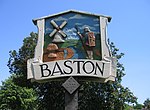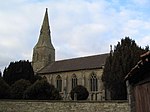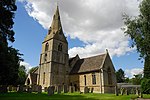Kirkstone House School
1964 establishments in EnglandEducational institutions established in 1964Private schools in LincolnshireUse British English from September 2020
Kirkstone House School is an independent day school situated in the rural village of Baston in south Lincolnshire, England.The school provides education for boys and girls aged between 4 and 18. Ages 4 to 11 are taught in the separate junior school, and up to GCSE at 16 in the senior school, with a traditional house structure. A sixth form was established at the school in 2013 (using the existing school infrastructure) catering for the BTEC Extended Diploma.
Excerpt from the Wikipedia article Kirkstone House School (License: CC BY-SA 3.0, Authors).Kirkstone House School
School Lane, South Kesteven Baston
Geographical coordinates (GPS) Address Nearby Places Show on map
Geographical coordinates (GPS)
| Latitude | Longitude |
|---|---|
| N 52.711151 ° | E -0.356159 ° |
Address
School Lane
School Lane
PE6 9PD South Kesteven, Baston
England, United Kingdom
Open on Google Maps











